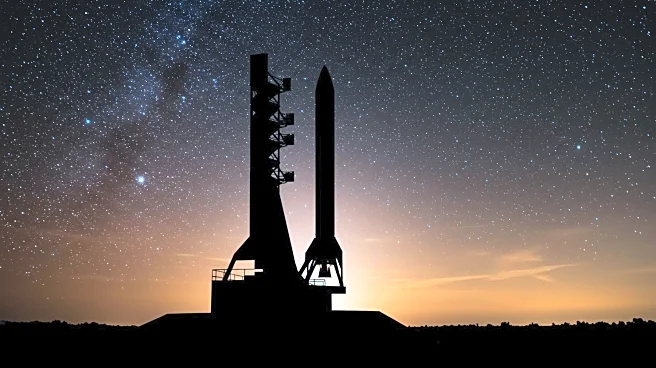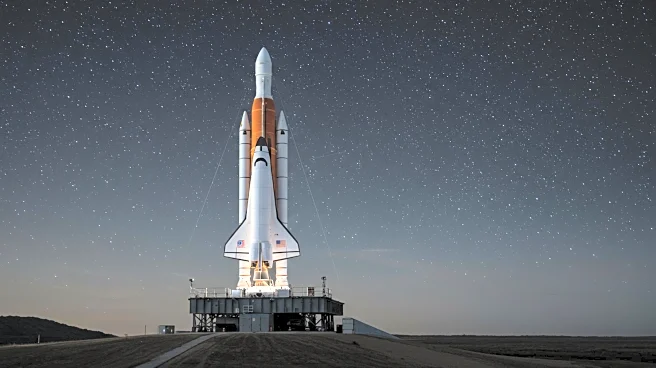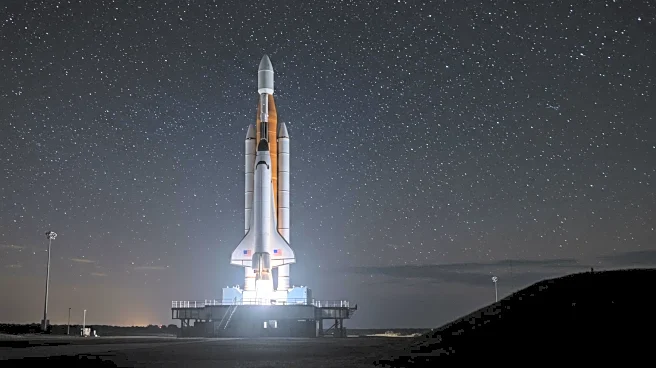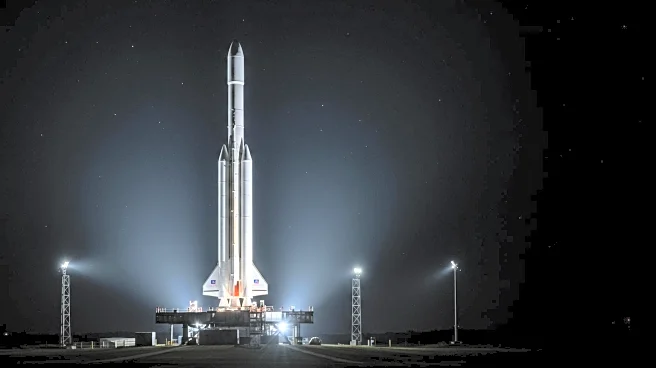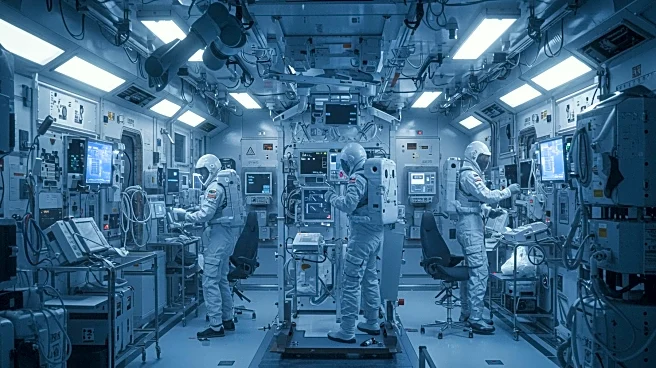What's Happening?
SpaceX has scheduled the 10th integrated test flight of its Super Heavy Starship rocket for August 24, 2025. The launch will occur at the company's Starbase facility in Texas, with a window opening at 7:30 pm EDT. This flight marks a critical phase in the development of the spacecraft, which is intended for missions to the Moon and Mars. The previous three flights this year ended with the loss of the upper stage, increasing pressure on SpaceX to meet its timeline for NASA's Artemis 3 lunar lander mission planned for 2027. The upcoming mission will utilize Booster 16 and Ship 37, both Block 2 versions with incremental upgrades. SpaceX aims to deploy eight Starlink satellite mass simulators, perform an in-space Raptor engine restart, and attempt a controlled splashdown in the Indian Ocean.
Why It's Important?
The success of Starship Flight 10 is crucial for SpaceX's long-term goals, including making human life multiplanetary and supporting NASA's lunar missions. The program's progress is vital for maintaining SpaceX's role in the Artemis program, which aims to return astronauts to the Moon for extended missions. The repeated failures of the upper stage in previous flights have put the program under scrutiny, and a successful launch would bolster confidence in SpaceX's capabilities. Additionally, the mission's success could influence future contracts and partnerships with NASA and other space agencies, impacting the broader space exploration industry.
What's Next?
Following the launch, SpaceX will analyze the results to refine the Starship design and address any issues encountered during the flight. The company will continue to prepare for future missions, including the Artemis 3 lunar lander mission. Stakeholders, including NASA and other space agencies, will closely monitor the outcomes to assess SpaceX's readiness for upcoming projects. The success or failure of this flight could affect SpaceX's timeline and strategy for future missions to the Moon and Mars.
